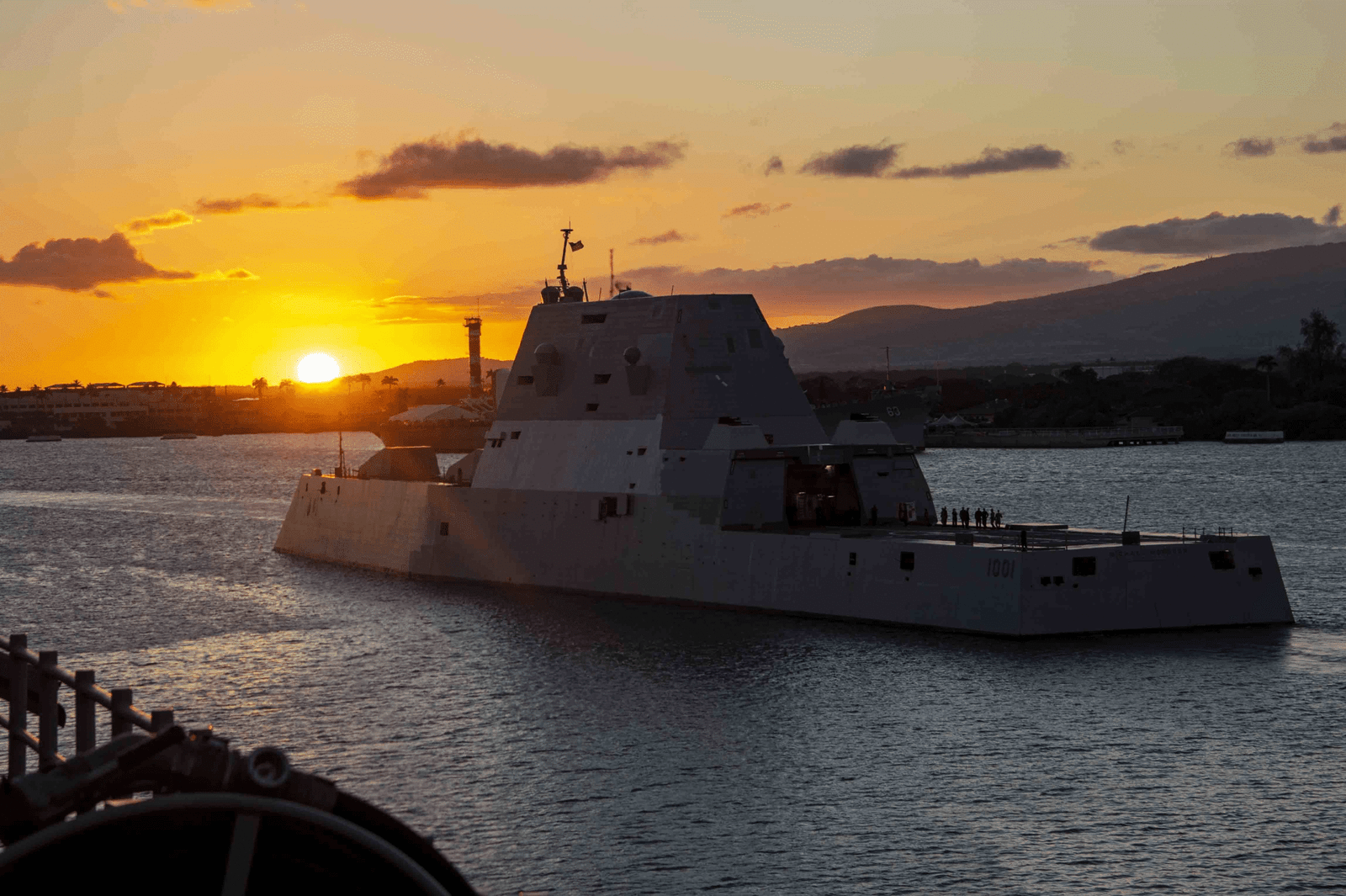
Few ships in naval history over the past few decades have caused as much controversy, disappointment, and cautious optimism as the USS Zumwalt (DDG 1000). When first envisioned, Zumwalt represented the cutting edge of a new generation of warship design—a stealthy, multi-mission destroyer that would outperform current and future threats. But the ride has been far from smooth, with technical setbacks, runaway costs, and shifting strategic imperatives shaping its past.

The Zumwalt-class was designed to meet today’s demands while also anticipating tomorrow’s challenges. Its wave-piercing tumblehome hull, radar-low profile, and powerplant combined into a ship that produces 78 megawatts of electricity—enough to energize a small town—represented a quantum leap in naval design.

With a radar cross-section considerably smaller than that of the Arleigh Burke class, a composite superstructure, and electronically steered arrays, Zumwalt was designed to evade enemy sensors. But things soon came back to reality.

Three of the planned 32 ships were manufactured for more than $4 billion each. The 155mm Advanced Gun System, for long-distance fire support, was made unfeasible by ammunition at $800,000 a round. The Navy possessed strong guns, but no effective way to put them to use.

In 2023, the ship was extensively transformed. The Navy started fitting the Conventional Prompt Strike (CPS) missile system. At HII’s Ingalls Shipbuilding in Pascagoula, Mississippi, crews removed the old gun systems and fitted new launch tubes for Intermediate-Range Conventional Prompt Strike (IRCPS) missiles. By December 2024, the ship was ready to return to active service with the fleet.

The CPS program is a Navy-Army partnership. Its hypersonic cruise missile, launched through a rocket booster and capable of Mach 6 speeds, follows a boost-glide trajectory and is hence extremely difficult to intercept.

Zumwalt’s new three-tube sets replaced the legacy gun turrets, giving the ship the capability to carry up to 12 hypersonics. Besides, its 80 Mk 57 Vertical Launch System cells are available for Tomahawks, Evolved Sea Sparrow Missiles, Standard Missiles, and Vertical Launch ASROC, giving the ship maximum flexibility. HII is also modifying Mk 41 and Mk 57 systems to allow Zumwalt-class ships to fire any missile from any cell, further boosting combat flexibility.

Strategically, the transformation reflects the accelerating pace of worldwide naval innovation. The surface warships and missile defense systems are transforming at a rapid pace, and Zumwalt’s stealthiness, speed, and hypersonic reach enable it to strike high-value, time-sensitive targets far into enemy defenses without being seen—something increasingly vital in disputed seas.

However, challenges remain. The ship’s innovative curved hull, while perfect for stealth, is susceptible to harsh seas, and the absence of close-in weapon systems is a deficiency. With only three ships of the class, fully loaded with advanced technology, maintaining them and updating them is expensive.

Planned standardization of some systems will replace Zumwalt’s unique radar and combat technology with more common equipment like the Enterprise Air Surveillance Radar (EASR) and the Aegis Combat System in order to reduce the costs of operation.

The broader naval environment is also challenging. Sustaining older Ticonderoga-class cruisers and Arleigh Burke-class destroyers overextends fleet resources, whereas next-generation ships of the DDG(X) are still on the drawing board. Even as international shipbuilding is picking up pace, the biggest question that lingers is: would better technology be enough to counteract the advantage of sheer numbers in sea battles in the future?
